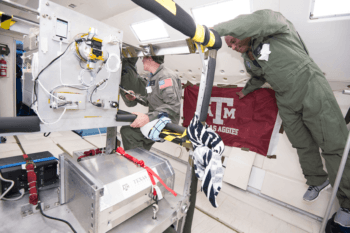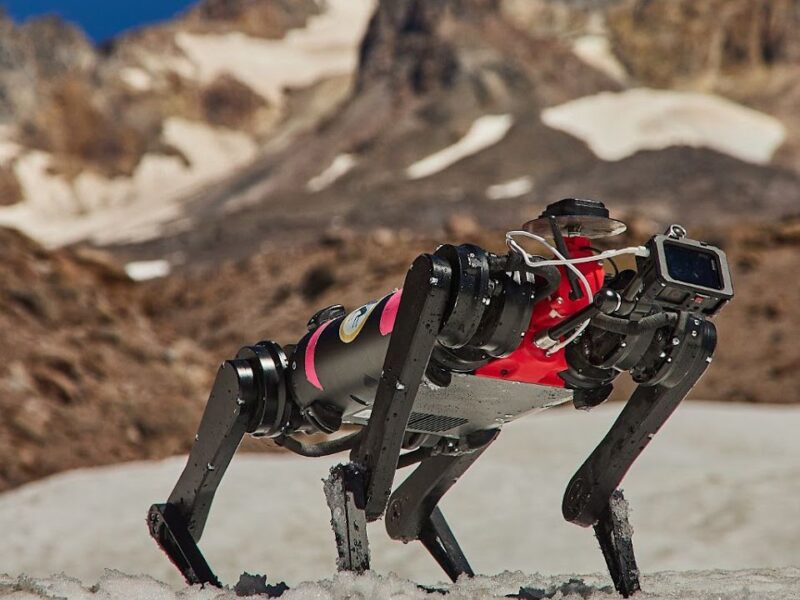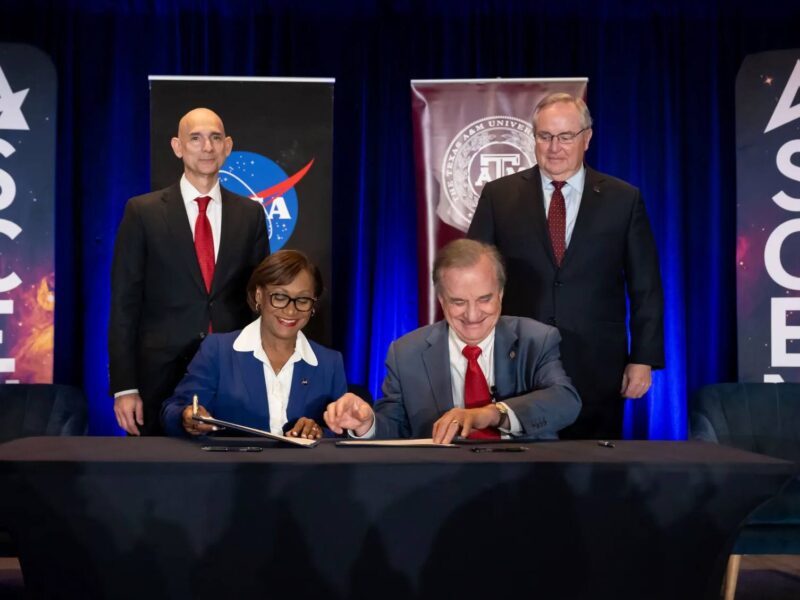Testing Advanced Radiator System For Future Spacecraft

A Texas A&M University researcher and three students have completed a a successful flight-test program aboard NASA’s reduced gravity aircraft of the demonstration of a variable heat rejection (DoVR) system. The experiment served as a demonstration of several fluid handling technologies for an advanced radiator system to be used in future spacecraft.
The project was headed by Dr. Cable Kurwitz, a Texas A&M Engineering Experiment Station (TEES) associate research engineer and senior lecturer with Texas A&M’s Department of Nuclear Engineering, and included undergraduate researchers Aldo Sosa, Juan Duran and Victor Ibarra. Duran and Ibarra are nuclear engineering majors, while Sosa is an electrical engineering major.
Kurwitz said the flight is a major step toward future suborbital testing aboard Virgin Galactic’s first research flight. Kurwitz, who is the director of the Interphase Transport Laboratory at Texas A&M, has been carrying out thermal fluid experiments related to this technology for over 25 years. The undergraduate student researchers assisting with this project are part of an undergraduate enrichment program sponsored by the Nuclear Power Institute (NPI). The program tasks students with engineering projects that are of interest to industry and government, provides them with mentorship opportunities and allows them to develop practical engineering experiences. According to Kurwitz, development of the DoVR system will allow future spacecraft to handle a wide variety of thermal loads and conditions.
“The DoVR system builds upon many previous technology programs to vary heat rejection from spacecraft radiators through the change in effective radiator area by modulating liquid between selected radiator lines and a gas-liquid separator,” Kurwitz said.
Kurwitz explained that, like all vehicles, spacecraft generate thermal energy from their onboard electronics, payloads and other sources in addition to absorbing it from external sources such as the sun and the Earth. On Earth, our machines can be cooled with air or liquid, but this is not possible in the vacuum of outer space. The DoVR technology builds upon current pumped liquid spacecraft radiators, but controls where the liquid in the radiator is allowed to flow using a set of valves, a gas-liquid separator and an ejector pump. This allows spacecraft to reject varying levels of waste heat to different sink temperatures preventing the spacecraft from overheating.
Continue reading on the TEES website.
This article by Robert Scoggins originally appeared in the Texas A&M Engineering Experiment Station website.





